You are here
Tsarevich Nikolai Romanov in Petropavlovsk.
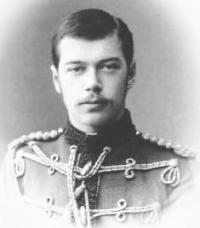
Historical dates of North Kazakhstan region.
“July 18th. Thursday. At 7 ½ I set out on a hot morning; quenched his thirst with milk in every yurt. At about 11 o'clock I arrived in Petropavlovsk; At the arch, the city deputation was still met with bread and salt, as well as the Cossacks of the local village and the mullahs. I took a city carriage to the cathedral. I liked the city; beautifully located on a hill in the middle of the steppe on the banks of the Ishim; very commercial center and famous for its large fairs. Many Tatars live in it; half-bundled, pretty Tatar women in beautiful costumes were sticking out of the windows.”
Diary of Tsarevich Nikolai Alexandrovich, future Tsar Nicholas II, July, 1891.
Trip from Petropavlovsk to Kostanay.
According to the tradition established in the Russian Imperial House, the education of the Heir to the Throne ended with a large trip abroad. As a rule, these were leading European states. However, Emperor Alexander III decided to send the Tsarevich on a long journey to the East, which no Russian heir to the throne had previously visited.
In nine months, Nikolai Alexandrovich had to visit Egypt, India, Ceylon, Singapore, Java, China, Japan by sea, and then return by land to St. Petersburg through Siberia. Secretary of State A.A. Polovtsov tried to convince the Tsarevich to return through the United States, but he said that he definitely wanted to see Siberia, and would see America “someday later.
The Heir's upcoming journey was given great national importance: Russia declared its interests in the Asia-Pacific region. The eastern journey of Nicholas II was made in the period from 1890 to 1891 - a trip of Tsarevich Nikolai Alexandrovich, the future Tsar Nicholas II, during which he visited many places in Eurasia.
The total length of the route traveled by the heir to the throne of the Russian Empire was more than 51,000 kilometers, including 15,000 kilometers by railways and 22,000 kilometers by sea. On October 23, 1890, after a church service in Gatchina, the Tsarevich went by train through Vienna to Trieste, where he boarded the cruiser Memory of Azov.
This route was chosen to avoid possible diplomatic difficulties with the Ottoman Empire, which controlled the Bosporus and Dardanelles straits. From Trieste, the expedition went to the port of Piraeus, where Nicholas met with his godmother Olga Konstantinovna and her husband King George I of Greece.
Their son Prince George joined the flagship team as an officer. From Greece the Tsarevich sailed to Port Said in Egypt. While the ship was passing through the Suez Canal, Nicholas and his retinue traveled along the Nile to modern Aswan.
From Suez the journey continued to Aden, and on December 11 the ship arrived in Bombay. Here Nikolai began a long journey through India, which ended in Colombo. In India, Nicholas visited all the major attractions, including the Taj Mahal and Harmandir Sahib (Golden Temple).
Leaving Ceylon on January 31, the expedition went to Singapore, then to the island of Java and Bangkok. In Siam, the future emperor spent a week visiting King Rama V. On March 13, he arrived in Nanjing and the Chinese part of his journey began.
On April 15, 1891, accompanied by six ships of the Russian Imperial Navy, Nicholas arrived in Japan. The Russian Pacific Fleet with the Tsarevich first visited Kagoshima, then Nagasaki and Kobe. From Kobe, the crown prince traveled overland to Kyoto, where he met with a delegation led by Prince Arisugawa Takehito.
On April 29, an incident occurred in Otsu where Nikolai was wounded in an assassination attempt. On May 7, Nikolai set off from Kobe and four days later arrived in Vladivostok. Here he completed the official part of his mission and began his journey across Russia back to St. Petersburg.
He traveled by land and along rivers through Ussuriysk, Khabarovsk, Blagoveshchensk, Nerchinsk, Chita, Irkutsk, Krasnoyarsk, Tomsk, Surgut, Tobolsk, Petropavlovsk, Tara, Omsk, Uralsk and Orenburg, and returned to St. Petersburg by train.
In July 1891, the Tsarevich left Omsk and headed to the city of Petropavlovsk, his path lay to the Presnogorkovskaya line, which stretched from Omsk to Zverinogolovskaya and then converged with the line of the Orenburg army and continued further to Troitsk.
In the XVIIIth century, the city was dominated by a military population, when the Peter and Paul Fortress was of main importance. In the 19th century, when Petropavlovsk became a large trading city, concentrating most of the trade with the Kazakh steppe, it was dominated by merchants and various traders from the burghers, retired soldiers, peasants and commoners.
At the beginning of the 20th century, when Large industrial enterprises appeared in the city (in particular, railway workshops and a cannery), and a significant layer of the working population formed.
In 1868, the son of Alexander II, Grand Duke Vladimir, passed through Petropavlovsk.
“From the cathedral I went to the house of the merchant Smolin, where there was a guard of honor from the local team; then he went to the consecration of the newly completed building of the city school and after a prayer service he returned to the same house of Smolin, who treated him to a magnificent breakfast and a lot of wines, among other things, and honey.
After eating, exhausted from the heat, he went into the garden and examined the rich yurt of a Kazakh merchant; I met his wife and daughter, who came up to say hello. There was a strong thunderstorm with rain, which, by the way, brought down the dust.
At 4 o'clock I left Petropavlovsk and on the 3rd morning I drank tea and champagne in a tent set up by the city society. I rode to the overnight stop with a huge convoy of Kazakhs. I arrived there just in time for sunset – the village of Stanovoy.
Yesterday’s police officer’s wife and her pretty sister and two other ladies served dinner!” “July 19th. Friday. After coffee, I said goodbye to these ladies and set off on the little road with a great, fresh morning.” From the diary of Tsarevich Nikolai Alexandrovich.
Petersburg newspapers wrote: “On July 18, the Tsarevich proceeded through Petropavlovsk, where there was a three-hour stop. His Highness was met by the Akmola governor and, having accepted bread and salt from the city, the bourgeois society, the Mohammedan clergy, the Cossacks and the city administration, attended the consecration of the city school.").
“After eating, exhausted from the heat, I went into the garden and examined the rich yurt of a Kazakh merchant; I met his wife and daughter, who came up to say hello. There was a strong thunderstorm with rain, which, by the way, brought down the dust.
At 4 o'clock I left Petropavlovsk and on the 3rd morning I drank tea and champagne in a tent set up by the city society. I rode to the overnight stop with a huge convoy of Kazakhs. I arrived there just in time for sunset – the village of Stanovoy.
Yesterday’s police officer’s wife and her pretty sister and two other ladies served dinner!” “July 19th. Friday. After coffee, I said goodbye to these ladies and set off on the little road with a great, fresh morning.”
Newspaper (“Eastern Review”. No. 31. July 28, 1891.
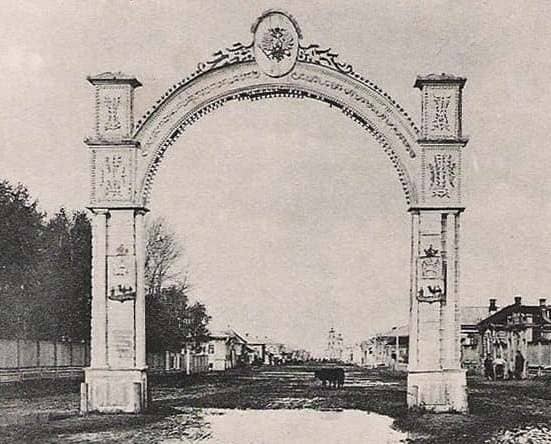
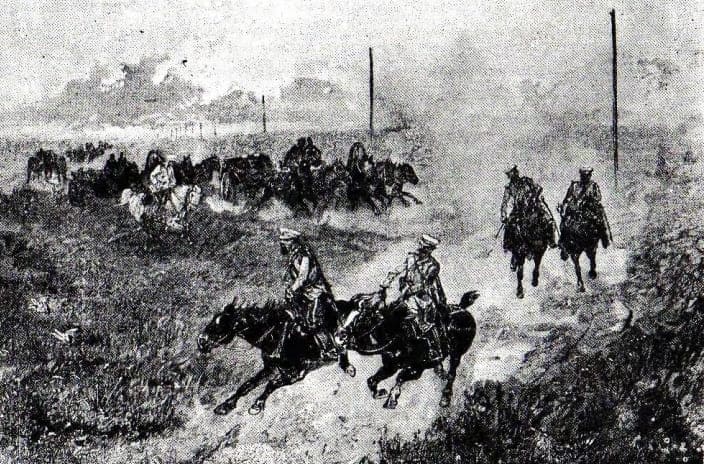
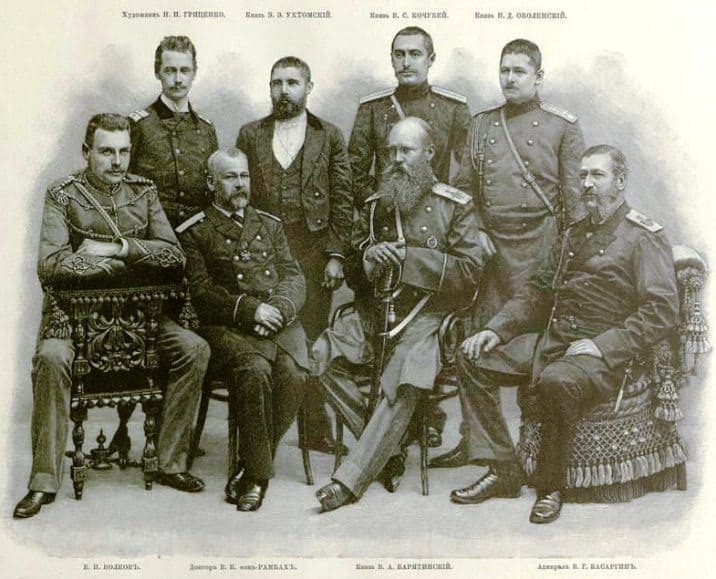
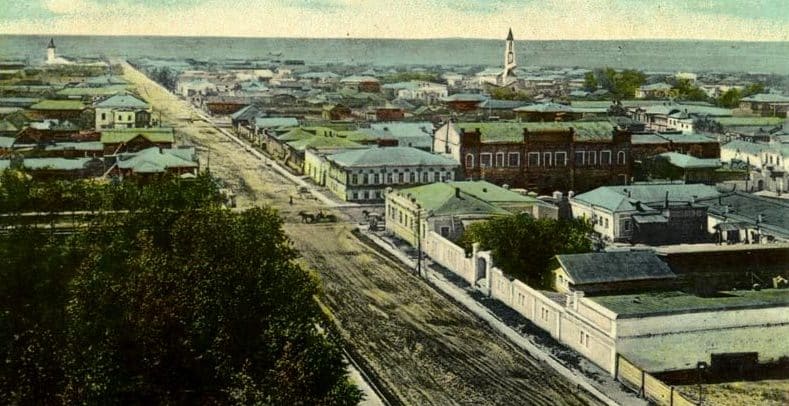
Authority and photos by:
“The Journey of the Heir Tsarevich Nikolai Alexandrovich to the East. 1890 - 1891
ttps://epoha-nikolaya-2.ru/russkoe-geograficheskoe-obshhestvo/






